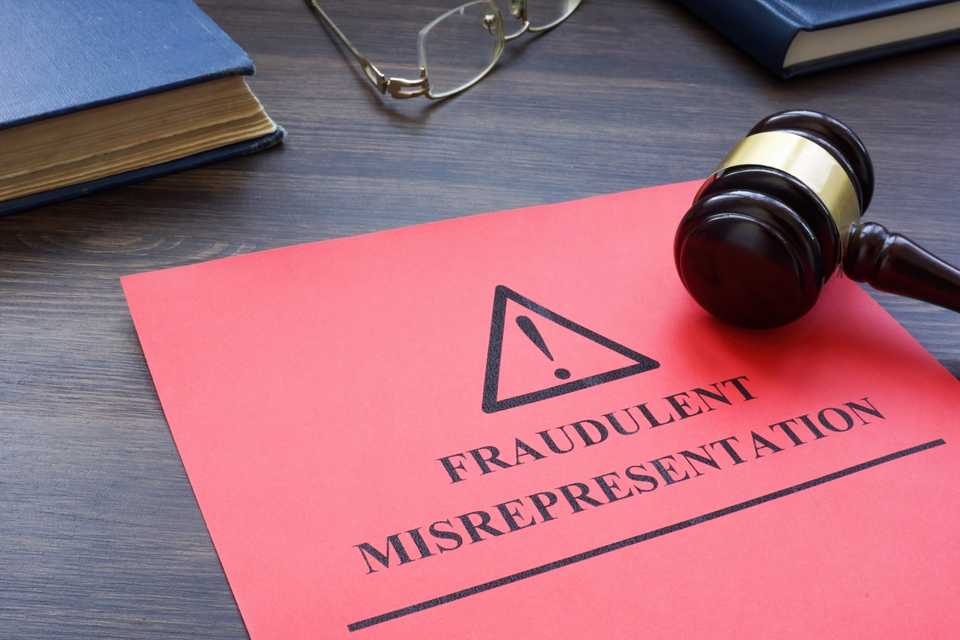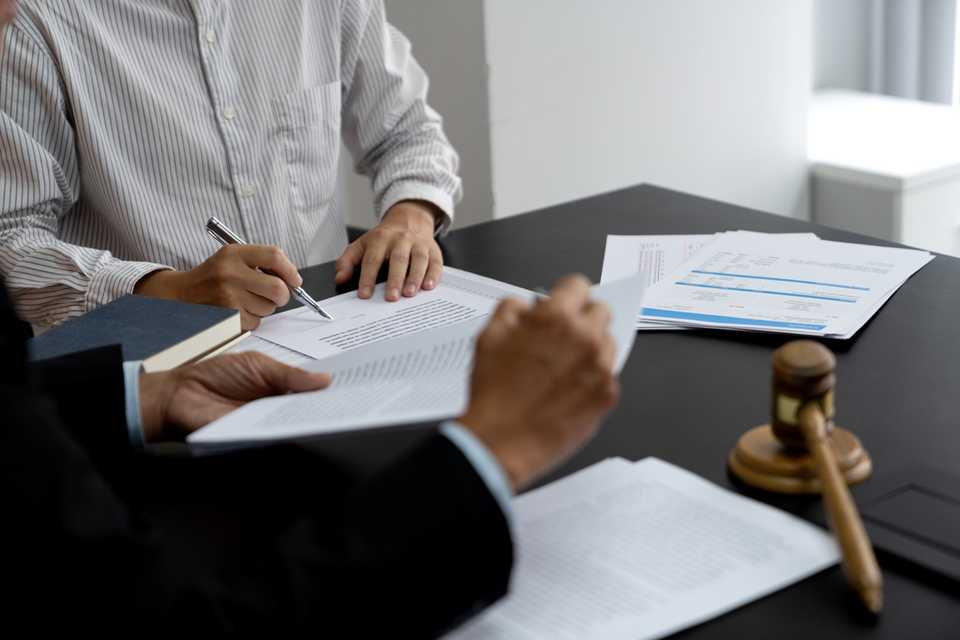Misrepresentation can arise in various contexts, from everyday transactions to complex business dealings, often leading to disputes that undermine trust in agreements.
Such situations can cause financial losses or strained relationships, highlighting the importance of addressing them effectively.
Dealing with fraudulent misrepresentation involves understanding its legal framework, examining its consequences, and determining how it can be proven in court. With the support of an experienced lawyer, victims can pursue justice and hold the responsible parties accountable.

| In this article, JuriGo explores the concept of fraudulent misrepresentation and the vital role that a lawyer plays in successfully handling such cases. |
|---|
What Is Fraudulent Misrepresentation?
Fraudulent misrepresentation is a deliberate and intentional act of deception in which one party provides false information to another with the intent to mislead. This deceit often results in financial, legal, or personal harm to the victim, as it compels them to enter into a contract or agreement under false pretenses.
The party making the false statement knows it is untrue or acts with reckless disregard for the truth, intending to deceive the other party.
Key Elements of Fraudulent Misrepresentation:
To establish a case of fraudulent misrepresentation, specific elements must be proven in court. These elements collectively demonstrate the intentional nature of the deceit and its impact on the victim.
| Element | Explanation |
|---|---|
| False representation | The misrepresentation must involve a false statement, act, or omission that is intended to mislead.In some cases, silence, or failure to disclose relevant information can also constitute fraudulent misrepresentation if there is a legal duty to provide such information. |
| Knowledge of falsity | The party making the statement must be aware that the information is untrue or act with reckless disregard for its accuracy. |
| Intent to deceive | The misrepresentation must be made with the specific intention of inducing the other party to act or refrain from acting. For example, the false statement might be designed to persuade someone to sign a contract or make a purchase. |
| Reliance | The victim must demonstrate that they relied on the false statement when making their decision. This reliance must be reasonable and directly tied to the actions they took as a result of the misrepresentation. |
| Damages | Finally, the victim must prove that they suffered measurable harm or losses as a direct result of the misrepresentation. This harm could be financial, contractual, or otherwise. |
In summary, establishing fraudulent misrepresentation in a legal setting requires demonstrating several key factors. These include the intentional nature of the misrepresentation, the reliance of the affected party on the false information, and the damages incurred as a direct consequence of that reliance.
Courts treat fraudulent misrepresentation with the utmost seriousness, as it erodes the core principles of honesty and trust that underpin contractual agreements.
There Are Different Types of Misrepresentation!
Misrepresentation is a broader legal concept encompassing various forms of false statements or omissions. It is essential to understand the different categories of misrepresentation to contextualize fraudulent misrepresentation within the framework of contract law.
The three main types are innocent misrepresentation, negligent misrepresentation, and fraudulent misrepresentation. Each type carries different legal implications and consequences.
Innocent Misrepresentation
Innocent misrepresentation occurs when one party provides inaccurate information without any intent to mislead or deceive. This type of misrepresentation arises when the individual genuinely believes the statement to be true at the time it is made.
Unlike fraudulent or negligent misrepresentation, innocent misrepresentation lacks any element of dishonesty or negligence, as the party is unaware that the information, they are providing is incorrect.

| Example: Consider a case where buyers contracted with a builder to construct their home, clearly outlining their preference for a specific style and specifying a one- or two-step entry as a crucial feature. The buyers were assured by the sales representative that the completed home would precisely match the design shown in the brochure, including the desired entryway.However, during construction, the builder informed the buyers that due to unforeseen grading issues, the entry would require four steps instead of the promised one or two. In this case, the builder’s misrepresentation regarding the entryway constitutes a breach of the agreement. |
|---|
Innocent misrepresentation can have significant consequences, particularly in contractual agreements. However, because there is no malicious intent, remedies for the affected party are generally less punitive.
The most common remedy is contract rescission, which allows the misled party to void the agreement and return to their pre-contractual position. Compensation for damages is typically not available in these cases unless expressly stated in the agreement.
Negligent Misrepresentation
Negligent misrepresentation occurs when a party provides false or misleading information without exercising the necessary care to verify its accuracy. This type of misrepresentation differs from innocent misrepresentation in that it involves negligence or carelessness, meaning the person making the statement failed to meet the required standard of care expected in the situation.
For negligent misrepresentation to be proven, several elements must be established:
- Duty of Care: There must be a special relationship between the parties, where the person making the statement owes the other party a duty to provide accurate information.
- False or Misleading Representation: The statement made by the party must be untrue, inaccurate, or misleading.
- Negligence: The defendant must have acted negligently, meaning they did not take reasonable steps to verify the information provided.
- Reasonable Reliance: The plaintiff must have reasonably relied on the false information in making their decision.
- Detrimental Reliance: The plaintiff must have suffered damages as a result of their reliance on the negligent misrepresentation.
| **Example:**A financial advisor recommends an investment option to a client, claiming it will generate high returns. However, the advisor bases the recommendation on unverified market data. When the client follows the advice and suffers financial losses, the financial advisor could be held liable for negligent misrepresentation, as they failed to ensure the accuracy of their recommendation. |
|---|
Negligent misrepresentation is considered more serious than innocent misrepresentation, as it involves a failure to take reasonable care, potentially leading to significant harm. Remedies for negligent misrepresentation often include compensatory damages to the affected party for their losses.
3. Fraudulent Misrepresentation
Fraudulent misrepresentation is the most severe type of misrepresentation. It occurs when one party knowingly makes false statements with the intent to deceive and mislead the other party. This type of misrepresentation is deliberate and calculated, often resulting in significant harm to the victim, who relies on the false information when making decisions.

Fraudulent misrepresentation carries the most severe legal. Victims are entitled to seek compensatory and sometimes punitive damages to address the harm caused!
Examples of Fraudulent Misrepresentation:
Fraudulent misrepresentation can arise in various contexts, from individual transactions to large-scale business dealings. Understanding real-world examples help illustrate the serious implications of this misconduct.
- Real Estate Fraud: A seller might advertise a property as being in excellent condition, deliberately concealing major structural defects. The buyer, relying on these assurances, may purchase the property only to discover costly issues that were intentionally hidden.
- Business Transactions: Fraudulent misrepresentation is common in mergers and acquisitions, where one party presents false financial records to inflate the perceived value of a company. This can lead to significant financial losses for the purchasing party once the true state of the company is revealed.
- Consumer Products: A manufacturer might falsely claim that a product has certain capabilities or certifications to attract customers. For instance, advertising a car as having advanced safety features that it does not actually possess could lead to fraudulent misrepresentation claims.
The key distinction between fraudulent misrepresentation and other types of misrepresentation lies in the intentional nature of the deceit!
| Negligent misrepresentation occurs when a party provides false information without taking the necessary steps to verify its accuracy. Unlike fraudulent misrepresentation, there is no intent to deceive; however, the party still fails to exercise reasonable care in ensuring the information is truthful. |
|---|
While negligent misrepresentation is less severe than fraudulent misrepresentation, it still carries legal consequences due to the breach of the duty of care owed to the other party.
Innocent misrepresentation arises when a false statement is made without any intention to deceive, and the person making the statement genuinely believes it to be true. There is no intent to mislead, and the misrepresentation occurs purely by mistake.
Proving Fraudulent Misrepresentation with a Lawyer!
Proving fraudulent misrepresentation is a complex and often challenging legal process that requires careful evidence gathering, a thorough understanding of legal standards, and a strategic approach to arguments.
To succeed in such a case, working with an experienced lawyer is essential, as they can guide you through the intricacies of the law, help build a strong case, and ultimately secure justice for the victim.
The Role of Evidence in Proving Fraudulent Misrepresentation:
In cases of fraudulent misrepresentation, evidence serves as the foundation for substantiating claims. Proving deliberate false statements made with intent to deceive can be challenging without solid, admissible proof.
A lawyer plays a pivotal role in gathering, organizing, and presenting evidence effectively. This includes securing relevant documents, such as contracts, emails, or advertisements, and identifying key witnesses to provide firsthand accounts of the fraudulent actions. The lawyer ensures that all evidence complies with legal standards, increasing its likelihood of being accepted in court.

Beyond evidence collection, a lawyer offers strategic advice on the best course of action, whether pursuing compensatory damages, seeking punitive damages, or exploring alternative resolutions. By assessing the evidence and case specifics, they guide you toward achieving a favourable outcome and securing the compensation you deserve.
Types of Evidence in Fraudulent Misrepresentation Cases
Key forms of evidence include written documents such as contracts, emails, or advertisements, as well as any verbal communication that may have been recorded or witnessed.
For example, emails between parties that contain the false statements, contracts that reflect misrepresentations, or advertisements that mislead potential buyers are all critical pieces of evidence in fraudulent misrepresentation claims.
Furthermore, witness testimony can be a crucial asset, as it can provide firsthand accounts of the fraudulent statements, their context, and how they influenced the victim’s actions.
Effective Presentation of Evidence
An experienced lawyer will know how to organize and present this evidence effectively, ensuring that it is admissible in court and aligned with the legal standards for proving fraudulent misrepresentation!
Establishing the Key Elements of Fraudulent Misrepresentation
As mentioned earlier, to prove fraudulent misrepresentation, certain key elements must be established, including:
False Representation:
The first step in establishing fraudulent misrepresentation is proving that a false statement was made. The lawyer will work to gather all relevant documents, testimonies, and other records that demonstrate the falsity of the representation.
This can include comparing the statements made by the defendant with objective evidence, such as public records or expert testimony, to show that the defendant’s claim was not true.
Intent to Deceive:
To prove that the defendant acted with fraudulent intent, the lawyer will seek to highlight evidence of knowledge or recklessness on the part of the defendant. For example, inconsistencies in the defendant’s statements or evidence that shows the defendant was aware of the truth can establish intent.
A lawyer may also look for signs of deceit, such as attempts to cover up information or mislead the victim in other ways. This can be critical to distinguishing fraudulent misrepresentation from negligent or innocent misrepresentation.
Reliance on the False Representation:
Next, the lawyer will show that the victim relied on the false representation. This is often done by presenting evidence of how the victim’s actions were directly influenced by the misrepresentation.
For example, if a buyer was persuaded to purchase a product based on false claims, the lawyer might present documents such as purchase agreements or emails showing the victim’s reliance on the misrepresented facts.
Resulting Damage:
Finally, the lawyer must show that the victim suffered damage as a result of relying on the fraudulent statement. This may include financial losses, lost opportunities, or other harm directly caused by the defendant’s misrepresentation.
The lawyer will typically gather financial records, expert testimony, and other evidence to quantify and demonstrate the losses sustained by the victim.

The burden of proving these elements rests with the party alleging fraudulent misrepresentation. A skilled lawyer can help tailor their arguments to demonstrate each of these points and ensure the case meets the required burden of proof. The lawyer's role in crafting arguments for each element is crucial to the success of the case.
Navigating the Legal Process
Legal cases involving fraudulent misrepresentation can be complex and require a thorough understanding of legal procedures. The process often includes pre-trial discovery, depositions, cross-examinations, and settlement negotiations. An experienced lawyer plays a critical role in guiding you through these stages and ensuring that your case is presented effectively.
Pre-trial Discovery:
Pre-trial discovery is a crucial step in building a strong case. During this phase, both parties gather and exchange evidence. A lawyer will assist in obtaining key documents, deposing witnesses, and reviewing records to uncover all relevant information. This helps identify any inconsistencies in the defendant’s statements and strengthens the victim’s position.
Depositions and Cross-examinations:
Depositions and cross-examinations are critical components of the litigation process. In depositions, witnesses are questioned under oath, providing valuable testimony that can either support or weaken the case.
Cross-examinations further allow your lawyer to challenge the credibility of the opposing side’s witnesses, helping to expose any falsehoods or inconsistencies in their statements.
Settlement Negotiations:
In some cases, settling outside of court may be the most efficient option. A lawyer can negotiate on your behalf, seeking a fair settlement that compensates for damages and resolves the dispute. This approach minimizes costs, delays, and risks associated with prolonged litigation. However, if a settlement cannot be reached, your lawyer will be fully prepared to take the case to trial.
Taking the Case to Trial:
If settlement efforts fail, your lawyer will represent your interests in court. With thorough preparation and a strategic approach, they will argue your case, presenting evidence and questioning witnesses to achieve the best possible outcome. The lawyer’s expertise in courtroom procedures and legal strategy will be critical in securing a favourable ruling.
Ensuring Compliance with Legal Standards:
Each jurisdiction has its own specific legal standards for proving fraudulent misrepresentation. It is essential to comply with these standards to avoid procedural errors that could jeopardize the case.
An experienced lawyer ensures that all necessary legal documents are properly filed, deadlines are met, and all procedural requirements are followed. This attention to detail increases the chances of success and prevents unnecessary delays or complications.
Fraudulent misrepresentation is a serious issue that can significantly impact individuals and businesses. Proving it requires careful attention, strong evidence, and a strategic legal approach. An experienced lawyer helps collect and present evidence, establish key elements, and comply with legal standards, maximizing the chances of a successful outcome!
Find the Right Lawyer for You with JuriGo!
If you believe you have fallen victim to fraudulent misrepresentation or any other type of misrepresentation, seeking legal representation is crucial. The nature of the misrepresentation will determine the type of lawyer you need. For example, if the fraud involves business transactions or investments, you should consult a business lawyer.
If the case relates to real estate or property, a real estate lawyer with experience in fraud cases would be ideal. For personal injury or consumer fraud matters, a lawyer specializing in liability is more appropriate. Each type of fraudulent misrepresentation has its own legal intricacies, so working with a lawyer who specializes in the relevant area will maximize your chances of success.
Fortunately, JuriGo provides access to the specialized lawyers you need for your misrepresentation case!

JuriGo provides a simple, fast, and free solution for finding a lawyer! Our service is confidential, free of charge, and requires no commitment.
Simply fill out our request form, detailing your situation, and we will promptly connect you with a lawyer in your area!
